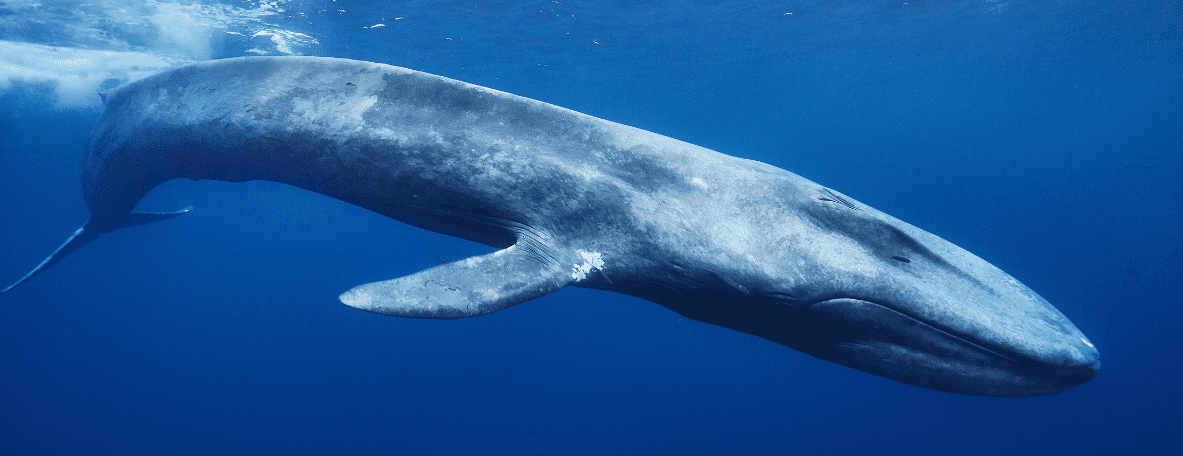
The blue whale is the largest animal ever known to have lived on Earth — bigger than any dinosaur! Despite their enormous size, blue whales feed almost exclusively on tiny shrimp-like animals called krill.
Blue whales can grow up to 33 meters (110 feet) long and weigh as much as 150 metric tons (333,000 pounds). Even when born, calves are about 7 meters (23 feet) long. Named after their blue-gray mottled appearance, the blue whale can be found in all oceans across the globe but rarely in the Arctic. There are five recognized subspecies of blue whales, each differing by their location and appearance.
Despite their large size, blue whales feed primarily on tiny krill as well as occasionally fish and small crustaceans. They filter feed for krill by swimming towards schools of krill with their mouths open, then closing their mouth around the krill and filtering out the water using their tongue and baleen plates in their mouth. Blue whales often feed and swim alone or in pairs but occasionally gather in small groups. Not all blue whales migrate, but those that do travel between warm waters near the equator in the winter and cooler feeding grounds in polar waters in the summer. It is thought that these whales can live for 80-90 years.